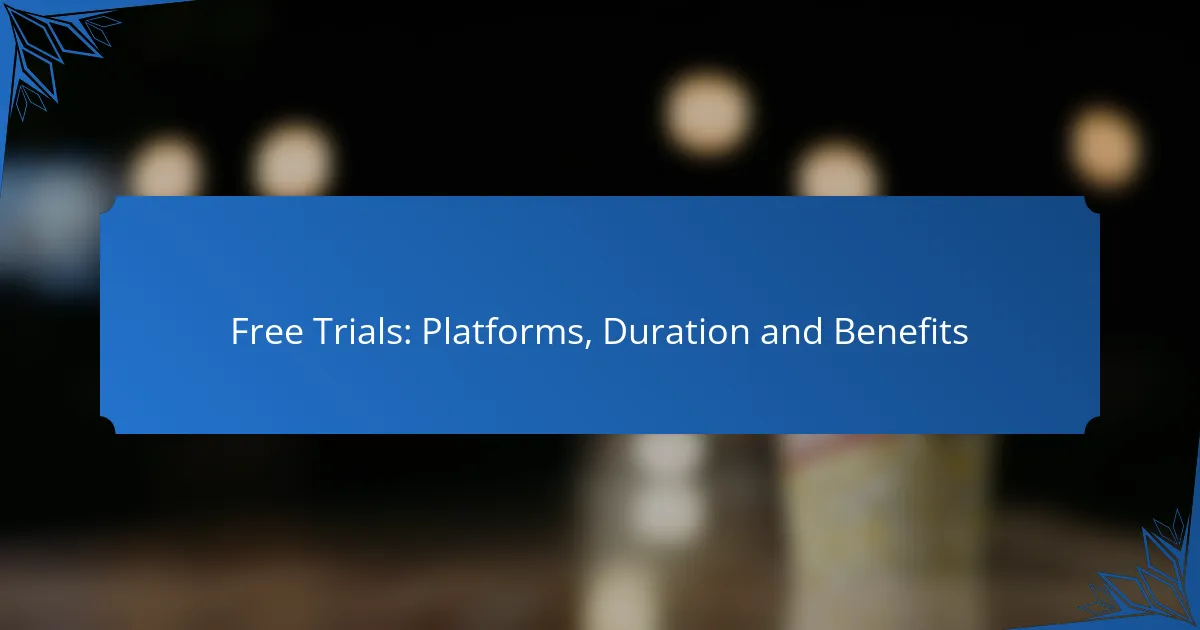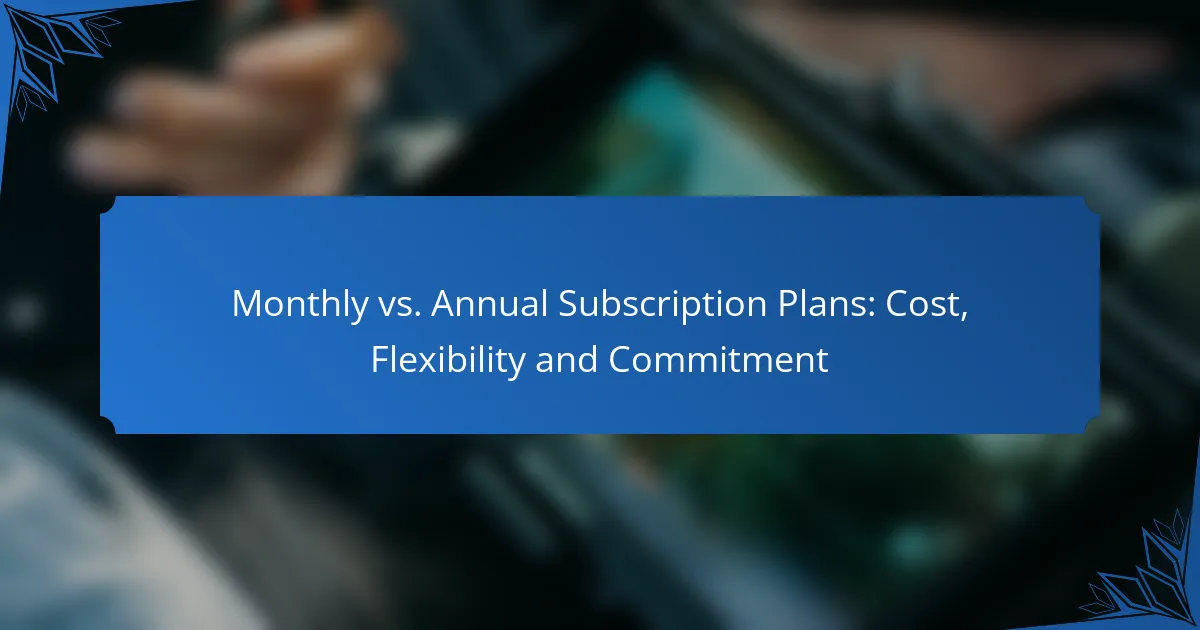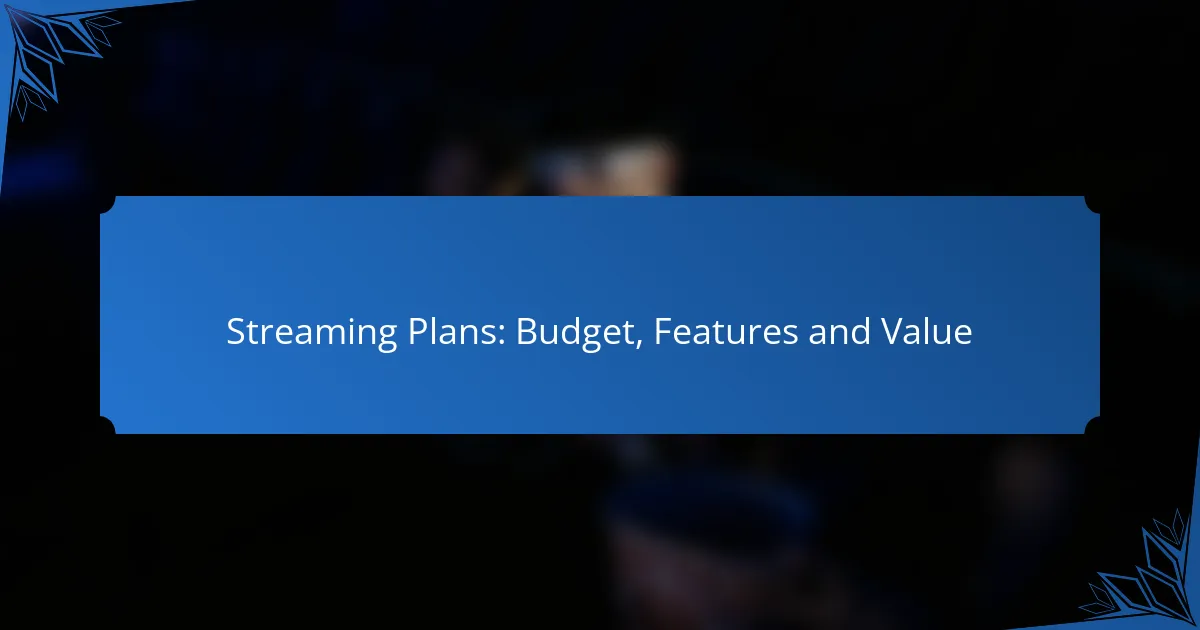Free trials are an excellent way for users to explore various platforms without any financial commitment, typically lasting from a few days to a month. These trials allow individuals to assess features, usability, and overall value, enabling informed decision-making before subscribing to a service. With durations commonly set at 7, 14, or 30 days, users can thoroughly evaluate whether a platform meets their needs.
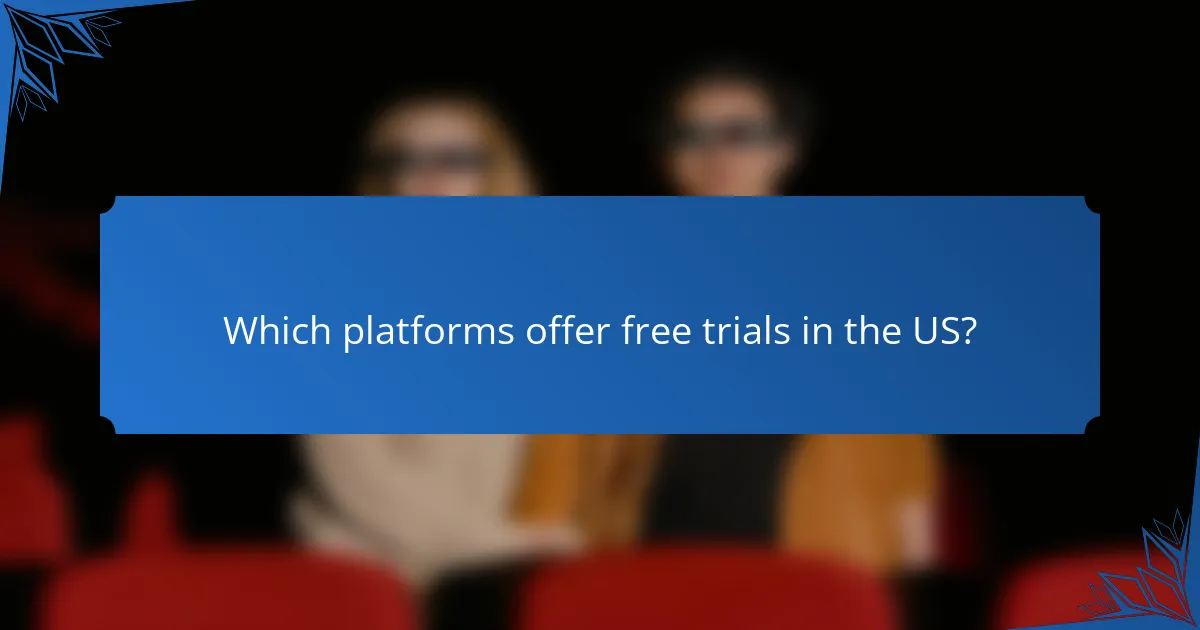
Which platforms offer free trials in the US?
Several popular platforms in the US provide free trials, allowing users to explore their features before committing to a subscription. These trials typically last from a few days to a month, depending on the service.
Adobe Creative Cloud
Adobe Creative Cloud offers a 7-day free trial for its suite of creative applications, including Photoshop, Illustrator, and Premiere Pro. Users can access all features during this period, enabling them to evaluate the software thoroughly.
To start the trial, simply create an Adobe account and download the Creative Cloud app. Be mindful that after the trial ends, you will need to choose a subscription plan to continue using the software.
Microsoft 365
Microsoft 365 provides a 1-month free trial that includes access to popular applications like Word, Excel, and PowerPoint, along with OneDrive cloud storage. This trial allows users to experience the full range of features available in the subscription.
Signing up requires a Microsoft account, and you will need to provide payment information. Remember to cancel before the trial ends if you do not wish to be charged for the subscription.
Salesforce
Salesforce offers a 30-day free trial for its Customer Relationship Management (CRM) platform. This trial gives businesses the chance to explore various tools for sales, customer service, and marketing automation.
To initiate the trial, visit the Salesforce website and fill out the registration form. Keep in mind that after the trial period, you will need to select a pricing plan to continue using the service.
Spotify
Spotify provides a 1-month free trial of its Premium service, which allows users to enjoy ad-free music streaming and offline listening. This trial is available to new users and can be a great way to experience the full benefits of the platform.
To activate the trial, create a Spotify account and choose the Premium option. Be cautious, as you will be automatically charged if you do not cancel before the trial concludes.
Canva
Canva offers a 30-day free trial of its Pro version, which unlocks advanced features such as premium templates, additional storage, and collaboration tools. This trial is ideal for users looking to enhance their design capabilities.
To get started, sign up for a Canva account and select the Pro trial option. Remember to cancel before the trial ends if you decide not to continue with the paid subscription.
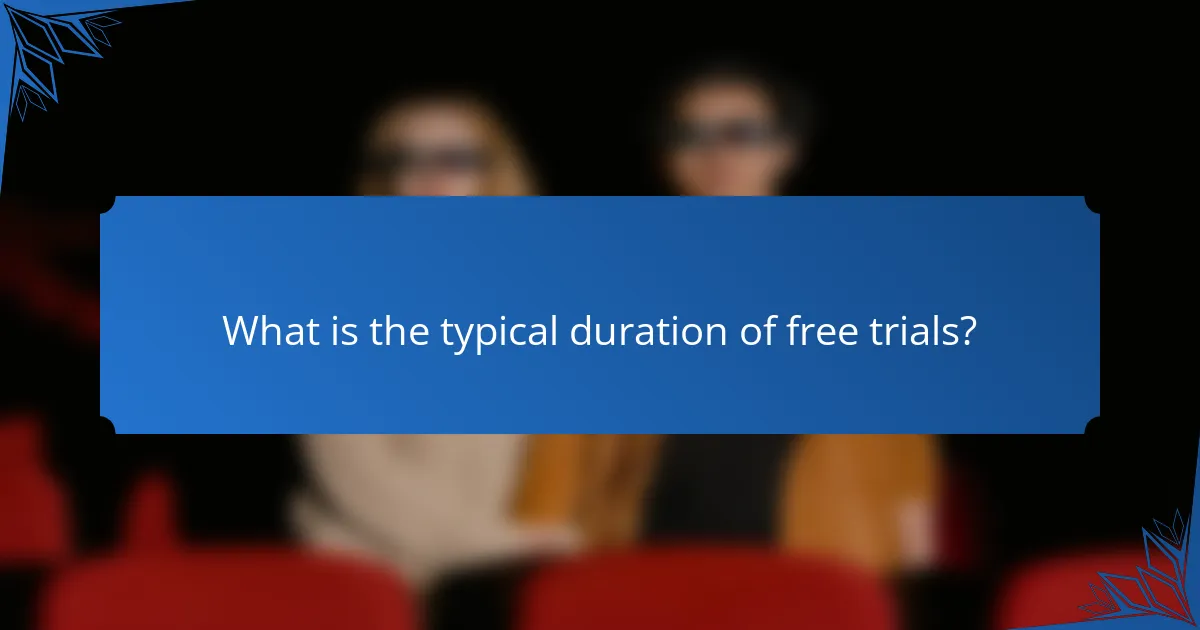
What is the typical duration of free trials?
The typical duration of free trials varies, but they commonly last for 7, 14, or 30 days. This timeframe allows users to explore features and determine if the service meets their needs before committing to a subscription.
7-day trials
7-day trials are often used by platforms aiming for quick user engagement. This short duration encourages users to explore essential features rapidly, making a decision before the trial ends.
However, the limited time can pressure users to rush through the experience, potentially leading to an incomplete understanding of the service. It’s crucial to maximize this period by focusing on key functionalities that matter most to you.
14-day trials
14-day trials provide a balanced duration, allowing users to delve deeper into the platform’s offerings. This timeframe is often sufficient for users to assess the service’s value without feeling rushed.
During a 14-day trial, it’s advisable to set specific goals for what you want to achieve, such as testing particular features or integrating the service into your workflow. This structured approach can enhance your evaluation process.
30-day trials
30-day trials are ideal for users who need ample time to evaluate a service thoroughly. This extended period allows for a comprehensive exploration of features and benefits, making it easier to assess long-term suitability.
With a 30-day trial, consider breaking down your evaluation into weekly segments, focusing on different aspects each week. This method can help you avoid overwhelm and ensure a thorough assessment before making a commitment.

What are the benefits of using free trials?
Free trials offer users the chance to explore a product or service without financial commitment, allowing for informed decision-making. They provide an opportunity to assess features, usability, and overall value before making a purchase.
Cost savings
One of the primary benefits of free trials is the potential for significant cost savings. Users can experience premium products or services without upfront payments, which can be particularly advantageous for budget-conscious individuals or businesses.
For instance, software platforms often offer free trials lasting from a week to a month. This allows users to evaluate whether the investment aligns with their needs, potentially saving hundreds of dollars if the product is not suitable.
Risk-free evaluation
Free trials enable a risk-free evaluation of a product or service, allowing users to test functionality and performance without financial pressure. This hands-on experience can clarify whether the offering meets specific requirements.
During the trial period, users should actively engage with all features, noting any limitations or issues. This proactive approach helps avoid future dissatisfaction and wasted resources on unsuitable purchases.
Access to premium features
Many free trials provide access to premium features that may not be available in basic versions. This allows users to fully explore the capabilities of a product, which can be critical for making an informed choice.
For example, a streaming service might offer a free trial that includes ad-free viewing and exclusive content. Users can assess whether these premium features justify the subscription cost, enhancing their overall experience.
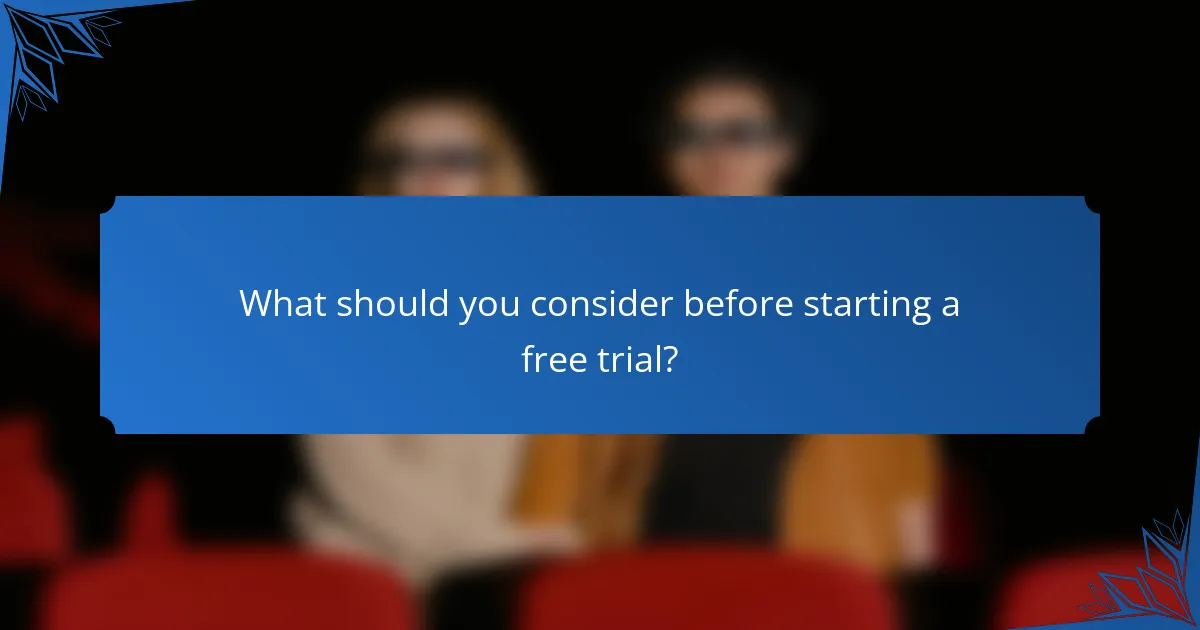
What should you consider before starting a free trial?
Before starting a free trial, consider the terms and conditions, including cancellation policies, feature limitations, and billing information requirements. Understanding these aspects can help you maximize the benefits of the trial and avoid unexpected charges.
Cancellation policies
Cancellation policies vary significantly across platforms. Some services allow you to cancel anytime without penalties, while others may require you to cancel a few days before the trial ends to avoid being charged.
Always read the fine print regarding cancellation. For instance, if a platform offers a 30-day trial but requires a 5-day notice for cancellation, you must track your trial period closely to avoid unwanted charges.
Feature limitations
Many free trials come with limited features compared to paid subscriptions. It’s essential to identify which features are included in the trial and which are reserved for paying customers.
For example, a software platform might offer basic functionalities during the trial but restrict access to advanced tools or premium support. Assess whether the available features meet your needs before committing.
Billing information requirements
Some platforms require you to provide billing information upfront to access a free trial. This practice can lead to automatic charges if you forget to cancel before the trial ends.
Consider using a virtual card or a payment method with spending limits if you’re concerned about unexpected charges. Always check if the platform clearly states when and how you will be billed after the trial period.
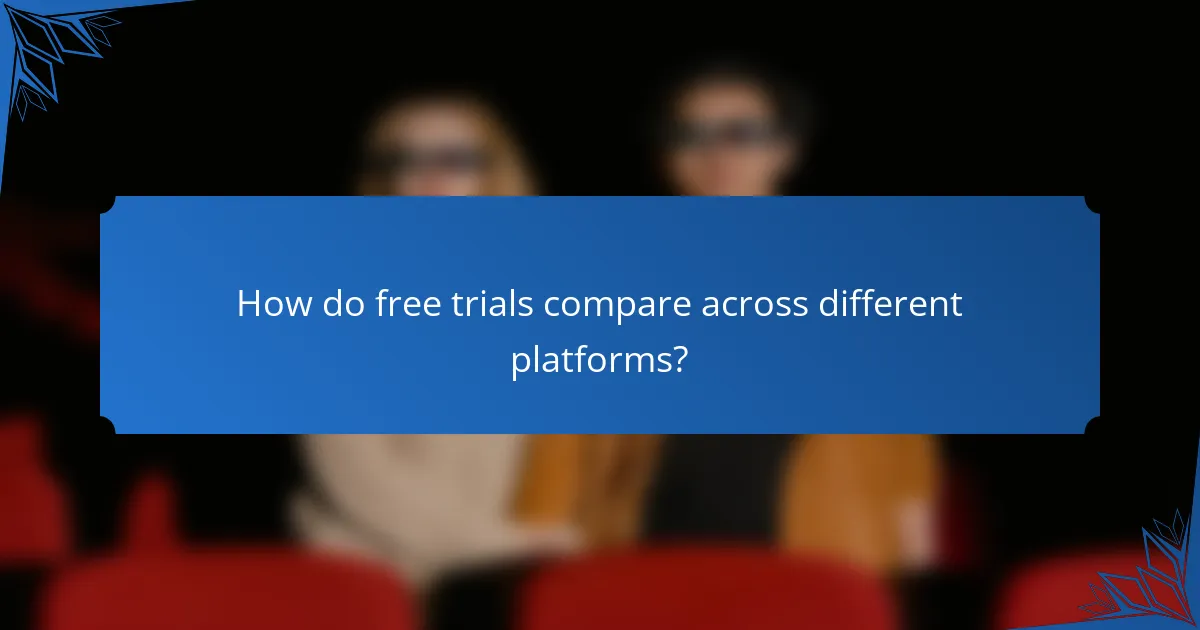
How do free trials compare across different platforms?
Free trials vary significantly across platforms in terms of duration, features offered, and accessibility. Understanding these differences can help users select the right service for their needs.
Duration of Free Trials
The duration of free trials can range from a few days to several months, depending on the platform. For instance, software services like Adobe Creative Cloud often provide a 7-day trial, while platforms like Netflix may offer a month-long trial period. Users should consider how much time they need to evaluate the service before committing.
Features Offered During Trials
Not all free trials provide full access to features. Some platforms, like Spotify, may limit access to certain playlists or premium features during the trial. Others, such as Microsoft Office, typically offer full functionality. Users should check what is included in the trial to ensure it meets their evaluation needs.
Accessibility of Free Trials
Accessibility can vary widely; some platforms require credit card information upfront, while others do not. For example, many SaaS platforms ask for payment details to prevent service interruption after the trial ends. Users should be cautious about sharing payment information and look for platforms that offer trials without such requirements to avoid unexpected charges.
